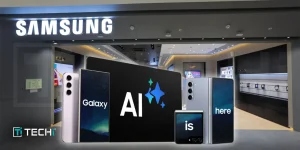Latest
5064 Stories

Amazon AWS Launches New Division Focused on Agentic AI
Picture this AI that not only talks to you but also books your taxi, reserves a table at your favorite...

Musk Attempt to Stop OpenAI Transition into a for-Profit Entity Turned Down by Judge
Elon Musk co-founded Open AI and was a major financial contributor to it from 2015 to 2020, as per the...

OpenAI Faces Legal Scrutiny over Copyright Claims, as Alec Radford gets Subpoenaed
Who knew AI models would end up needing copyright lawyers more than programmers? The more artificial intelligence transforms an industry,...

Samsung Unveils Galaxy S25 AI Features at MWC 2025, Redefining Smart Technology
The Mobile World Congress 2025 kicked off in the Presence of the King of Spain, Felipe VI, on Monday 3rd...

Samsung Unveils Mind-Blowing AI Innovations in Mobile, Health, Home, and Networks!
Samsung has once again proved itself in the world of technology as it presented a breathtaking extravaganza of AI-oriented innovations...

Trump’s Administration Cuts AI Funding, Threatening U.S Innovation?
AI technology is progressing enormously, and the United States is leading in technological innovation, but it seems the recent move...

Infinix Unveils Solar Charging Phone Concept at MWC 2025 for a Greener Future
Let’s fast forward to the future and imagine, what if all smartphones are not wall-charged or power-banked but rather are...

Xiaomi 15 Ultra Launches as a Premium Flagship to Challenge Apple and Samsung
All the moves made by Xiaomi, this was the most daring and yet greatest of all, amidst the tussle for...

UK Investigates TikTok, Reddit, and Imgur Over Children’s Data Privacy Concerns
Rising online platforms have increasingly become characters that create the web experience for millions, in turn growing concern among parents...

Samsung Expands AI-Powered Galaxy A-Series with Three New 5G Models
The two major players in mobile technology duel - Samsung and Apple are competing with each other for supremacy in...

Signal Surges to No.1 Downloaded App in the Netherlands
The privacy-focused messaging app Signal has experienced an extraordinary rise in the Netherlands. Over the past month, it has topped...

Flora Introduces AI-Powered Infinite Canvas For Creative Professionals
AI-generated art has become a widespread trend, but many professional designers and artists argue that existing AI tools are not...
Page 2 of 422